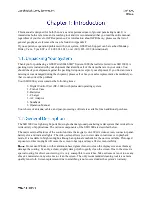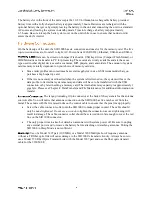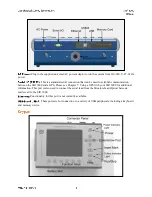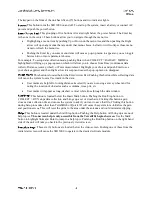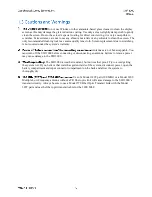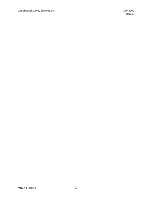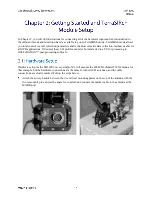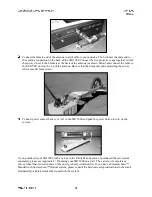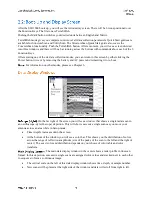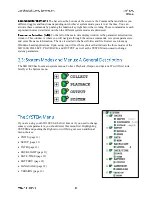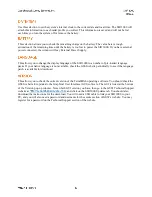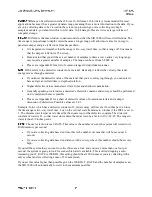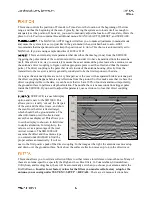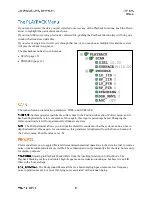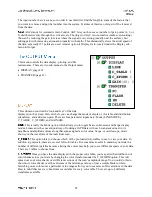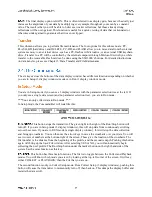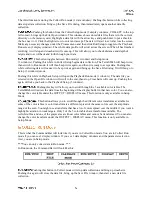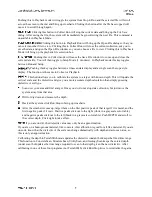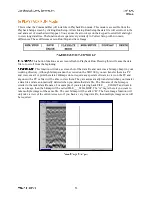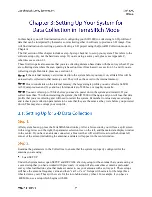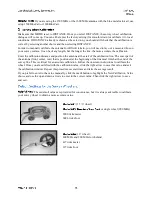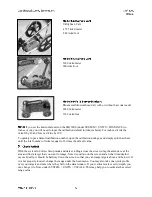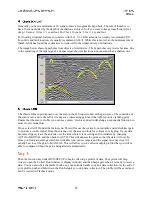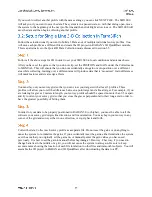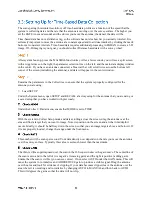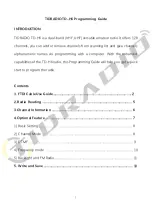
Data can be collected in either 8-bit or 16-bit format. 16-bit data is recommended for most
applications because it has a greater dynamic range, meaning there is more information in the data. If you
are only collecting data to be viewed on the screen (no processing), or are collecting very high
samples/scan data, you should set this to 8-bit data. 16-bit data profiles are twice as large in terms of
computer storage.
RANGE is the time window in nanoseconds (ns) that the SIR 3000 will record reflections. The
time range is proportional to depth viewed because a longer range will allow more time for energy to
penetrate deeper and give reflections from deeper down.
It is important to remember that the range is two-way travel time, so that a range of 50 ns means
that the deepest reflector is 25 ns deep.
Bear in mind that you still have a set number of samples to draw a curve and a very long range
may require a greater number of samples. The range can be set from 5-8000 ns.
Please see Appendix B for a list of common ranges for individual antennas.
DIEL refers to the dielectric constant of a material. Basically it reflects the velocity that radar
energy moves through a material.
If you know the dielectric value of the material that you are surveying through, you can enter it
here and get an in-field time to depth calculation.
Higher dielectric values mean slower travel time and shallower penetration.
Generally speaking, water raises a material’s dielectric constant, and surveys should be performed
on dry material whenever possible.
Please see Appendix D for a chart of dielectric values of common materials and a deeper
discussion of dielectrics. Possible values are 1-81.
Example:
In air, which has a dielectric constant of 1, radar energy will travel at 12 inches per ns. Since
the time range is two-way travel time, 1 ns on the vertical scale translates to 6 inches if the DIEL is set to
1. The distance traveled per ns is reduced by the square root of the dielectric constant. The dielectric
constant of water is 81, so that water slows down the radar wave by a factor of 9 (√81=9). The range in
water is thus 6/9 inches per ns.
The next selection is scan RATE. This value is the number of scans the system will record in its
RAM memory per second.
If you are collecting data based on time, this is the number of scans that will be saved each
second.
If you are collecting data based on distance with a survey wheel, this number should be set very
high.
If you tell the system that you want to collect 60 scans a foot, and you move more than one foot per
second, the system is going to look for scans which aren’t available. This is called dropping a scan.
Assuming your T_RATE is 100 KHz, this setting should be at 120 whenever you are collecting with a
survey wheel and are collecting a max of 512 samp/scan.
If you set this value higher than possible given the 100 KHz T_RATE and the number of samples/scan,
the SIR 3000 will automatically lower it to the maximum possible.

